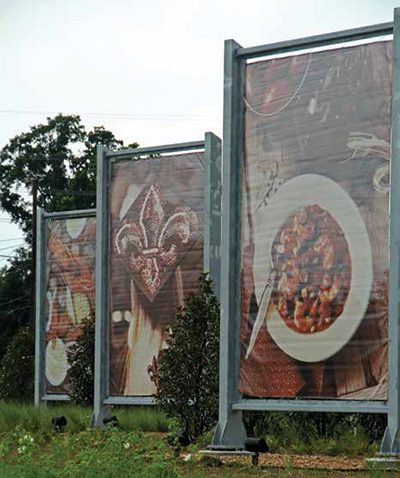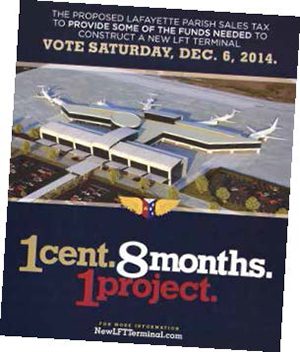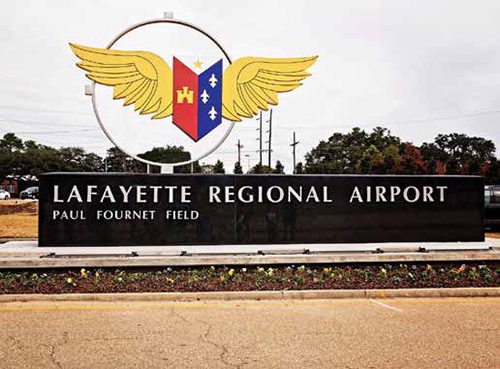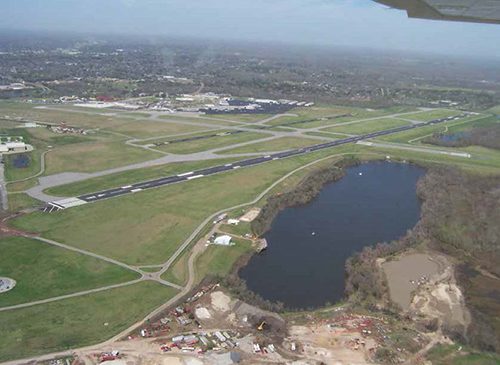Raising money for major construction projects is typically a major challenge, but officials at Lafayette Regional (LFT) recently got the job done in short order with a short-term sales tax earmarked to help fund a new terminal.
“The (existing) terminal dates back to the 1950s, and we are the only commercial airport in the state without a new terminal or a recently renovated one,” explains Executive Director Steven Picou. As Louisiana’s fourth-busiest airport, LFT serves approximately 500,000 passengers per year.
| facts&figures Project: New Terminal Location: Lafayette (LA) Regional Airport Projected Cost: $90 million Funding: FAA ($20 million); State of LA ($13.5 million); airport capital fund ($12 million); estimated local contribution ($30 million); TIGER grants & various bonds (balance of needed funds) Funding Mechanism for Local Costs: 1% parish sales tax Duration of Tax: April 1 – Nov. 30, 2015 Tax Collected: $32,635,000 Anticipated Construction: 2018-2021 Key Challenge: Convincing tax-averse citizens to support measure Primary Benefits: Improved facilities for airlines & passengers; support for economic growth throughout the region Keys to Success: Tax was specifically limited to 8 months & designated for new terminal only; marketing campaign convinced voters why tax/terminal was needed |
“Estimates showed the cost of renovating the current terminal would be nearly 80 % of the cost of building a new one, so it made sense to us to simply build a new one,” Picou adds.
With the project estimated to cost about $90 million, most of the money needed to build a new terminal will come from state and federal sources (see left for specific split). Beyond the $12 million LFT has in its capital fund for the project, officials estimated they needed at least $30 million more. To bridge that difference, the Lafayette Airport Commission proposed a 1-cent sales tax, to be collected for a finite period of eight months, from April 1, 2015 through November 30, 2015.
That left airport personnel with the daunting challenge of persuading tax-averse voters to support the fundraising measure. The commission opted for a hybrid approach of grassroots efforts and multimedia messaging to convince voters that a new terminal was critical to the future of the area’s economy and growth of Lafayette Parish. With the vote set for early December 2014, the commission launched its campaign in February 2014. Target audiences included airport customers, business leaders, civic organizations, government officials and the public at large. Key elements included:
• Educational brochures
Materials detailed the airport’s current capacity challenges, its competitive disadvantages and what improvements a new terminal could provide. They also included the exact language voters would see on the ballot, which emphasized that the tax was limited to just eight months, with no option for extensions. The airport printed and distributed more than 40,000 educational brochures.
• Personal presentations by airport officials
Airport representatives met with more than 70 groups, including chambers of commerce, rotary clubs, governmental bodies, travel associations and economic organizations to explain the tax and terminal project. They also passed out brochures at downtown events and provided materials to local businesses for distribution to customers.
• Artist renderings
Drawings and diagrams of what the new terminal could look like were displayed at the airport. Airport commissioners also showed them during their civic presentations to build excitement about the project.
• Social media
LFT personnel created a website and Facebook page about the initiative, where voters could find information and give feedback.
• Posters and yard signs
Promotional materials supporting the tax proposal and terminal were posted liberally and displayed by supportive local businesses.
• Push cards
Palm-size summaries of the proposal, another staple of election campaigns, were provided to individuals and businesses. LFT personnel also distributed them to vehicles leaving the airport parking lot – roughly 20,000 per month.
 • Direct mail
• Direct mail
The team developed a campaign summary and mailed it to every household in Lafayette Parish with registered voters.
• Paid advertising
Three television ads and three radio spots aired during the two weeks before the election. Newspaper and online ads were purchased to remind citizens to vote.
• Media relations
Press releases sent to all local media inspired 19 front-page stories and another six articles inside local newspapers. They also prompted numerous requests for commission members to make television appearances and provide radio interviews.
 Talking Points
Talking Points
Stressing to voters that the tax would disappear after eight months, no matter what, and that revenue it raised could only be used for a new terminal was crucial, Picou advises.
“The airport commission pushed for total transparency,” he emphasizes. “It was very important to them that the wording on the ballot be very specific — detailing what was being proposed, what (tax revenue) would be used for and that the tax had a specific period in which it would be collected — so there was no way any of those components could be changed after the vote.”
The commission’s pre-vote marketing campaign worked like a charm, he reports. There was no organized opposition to the proposal, and comments about the tax on social media were generally positive. On December 6, 2014, the citizens of Lafayette Parish overwhelmingly approved the tax proposal by a 16-point margin (58% voting for the measure and 42% against it). Many business organizations, government officials and news outlets publically endorsed the tax in the days leading up to the vote.
According to an audit conducted by the Lafayette Parish School Board earlier this year, the temporary sales tax collected $32,635,000. The results were good news for Picou, who had predicted the tax would generate between $30 million and $33 million.
Other key funding sources for LFT’s new terminal will be the State of Louisiana ($13.5 million); FAA ($20 million); and the airport’s capital fund ($12 million). Any remaining deficits will be paid for with TIGER grants from the Department of Transportation and various bonds.
Picou expects all necessary financing to be in place by early 2017. “We already have most of the money pledged to the project, so the major financial hurdles have been cleared,” he reports.
Several other key tasks remain, though. “Our next big step this year is to select an architect and engineering consulting firm,” notes Picou. The airport issued requests for proposals in December 2015, and the commission hopes to choose a consultant by June. “We expect it could take up to two years to develop and finalize all the detailed plans, so we hope to start construction sometime in 2018, with the project being done by 2021. Once we get going, construction projects down here proceed fairly quickly, since we don’t have bad winters.”
 Picou is excited about the new amenities in store for LFT’s passengers and airlines. “The new terminal will be a drastic upgrade,” he relates. “We will have at least five gates, and perhaps as many as seven. They will be spaced farther apart, so passengers won’t be crammed into one small space like we have now. The major airlines that use the airport (American, United and Delta) will be able to use larger aircraft to accommodate the expected growth of passenger traffic. TSA checkpoints will be much more efficient, and all the concessions will be nicer and more passenger-friendly.”
Picou is excited about the new amenities in store for LFT’s passengers and airlines. “The new terminal will be a drastic upgrade,” he relates. “We will have at least five gates, and perhaps as many as seven. They will be spaced farther apart, so passengers won’t be crammed into one small space like we have now. The major airlines that use the airport (American, United and Delta) will be able to use larger aircraft to accommodate the expected growth of passenger traffic. TSA checkpoints will be much more efficient, and all the concessions will be nicer and more passenger-friendly.”
Besides the draw of a sparkling new terminal, the Bell Helicopter manufacturing plant that opened at the airport last August is also expected to boost LFT’s traffic. With production goals of 150 to 200 helicopters per year, the facility is expected to bring in more passengers involved with the business. “We have a lot of businesspeople in the energy field who come through here, who want to use helicopters to get to oil fields,” explains Picou. “That will be a real growth area for us in the future.”




